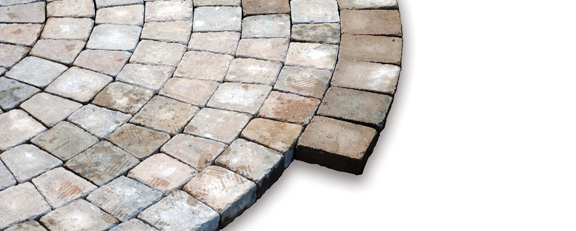Patio Preferences: Which is Best for You?
Our homes are typically the single largest investment we make. Whether you live in a modest ranch style home or a sprawling estate, making use of your space – both indoors and out – is a way to get the most value out of your property. In addition to sheltering you from the elements, a home presents to the world how we want to be seen by our family and friends. From a small element such as the color of your front door to the décor or style of your interiors can speak volumes.
If you are considering adding an outdoor space to your home, there are many things to consider. We’ve talked to some experts in the Lehigh Valley and this is what they had to say.
Make a Visual Connection
John Talago, owner of Chestnut Hill Landscaping equates using your outdoor space “the same way you would design a room in your home.” He adds “it’s important to have a visual connection from the inside to the outside,” so if you live in a colonial-style home, a sleek high-tech patio may not be as visually pleasing or integrate as well as another style. He also suggests taking into consideration what he terms ‘lifestyle elements.’ Talago suggests you ask yourself, “How will you be living in these outdoor spaces? And not just now (today), but in the future?” Taking into account future plans which might include space for a pond, pool, spa or firepit upfront will help you design a plan today that will meet your plans down the road. He also suggests leveraging the positive aspects of the site. For example, if you have a hilly terrain, work that into the design so it becomes an asset or feature of your design. “Remember, your patio has to work for your needs – think about the use of the space before you select your materials.”
Accommodate Your Needs
Bruce Fritzinger, a registered landscape architect with Plantique, recommends that when considering adding a patio, think of more than just the elements (concrete, cement, pavers, etc.). He says “Take the time to do a good mock-up by using pen/paper or a computer program; this will save you money and headaches later.”
He has two tips he would like to share. “First, design your patio to accommodate your needs and function. Second, choose materials that have little or no maintenance.” Fritzinger says it’s important to consider how your patio will be used. Will there be furniture or seating? Is shade needed? Will there be cooking taking place? Will lighting or heating be a consideration? He also recommends staying away from fads. “It’s better to be timeless with your selections. This is an investment in your property and thinking through the decisions now will save you from having to re-do your patio later on.”
Know Your Budget
Tom Schray, owner of Creative Landscapes, says that certainly the budget will influence not just the scope and scale of your project, but also the type of materials you’ll choose for your outdoor patio. The least expensive material is concrete, which is usually topped off with a ‘broom finish’ and requires expansion joints to allow the material to deal with the changing temperatures of the Lehigh Valley climate.
The next level up in terms of cost would be colored concrete, where the color is mixed in, followed by patterned or stamped concrete, where the pattern is applied to look like flagstone, stones, bricks, or whatever design the customer wants.
The most expensive materials would include concrete pavers and natural stone (Pennsylvania bluestone is a local favorite), as well as imported stone from places as far away as India and China. The only limitations are the creativity you and your landscape architect or designer brings to the conversation. Schray has seen concrete pavers as the most popular in his experience, as you are avoiding the eventual cracking which comes with concrete. The upfront costs may be higher, but the long-term costs are lower.
Consider This
Schray also suggests that if you are working with new home construction, decide if you want a deck or patio. Where are the doors at the rear of the house? It may require steps or stairs to get down to grade level. You may have options during the building process if you have a sense of the direction you’re looking to go in. It is also often less expensive to incorporate changes (French doors which lead to an eventual deck or patio) at the construction phase vs. having to make renovations after the home is complete.
Another major consideration is drainage. It’s important for the care and maintenance of your home to consider how water is addressed, as you don’t want water running towards your home’s foundation.
Safety is also an important issue, as it’s highly likely there will be walkways to and from your new outdoor patio, either from your home, or to other areas of your property. Another issue which a designer can assist you with is the placement of the patio. It’s important to be practical! It’s doubtful you want to relax and have friends over for a barbeque when the patio overlooks the garbage cans alongside the garage.
It used to be that only the very wealthy (think Downton Abbey) could afford to employ a landscape designer. Nowadays, these services are available to everyone. In fact, the smaller your lot and budget, the more sensible and smart it is to have a good landscape plan. Ultimately, whether your plan is designed by a professional or by yourself, keep in mind your needs now and down the road. Remember: today’s sandbox may be tomorrow’s spa and retreat!





